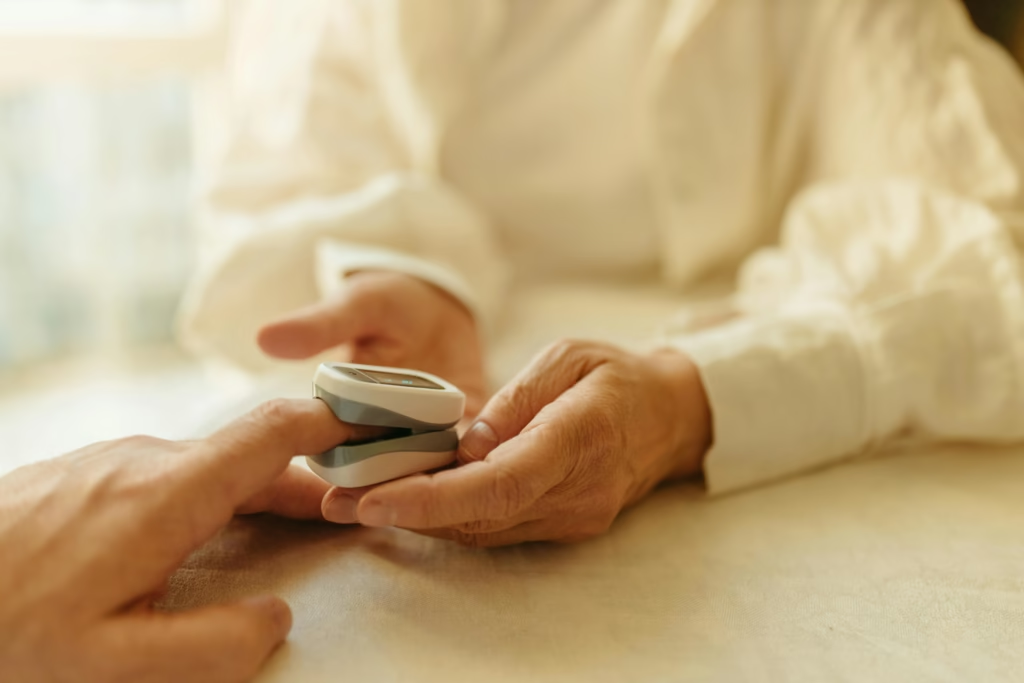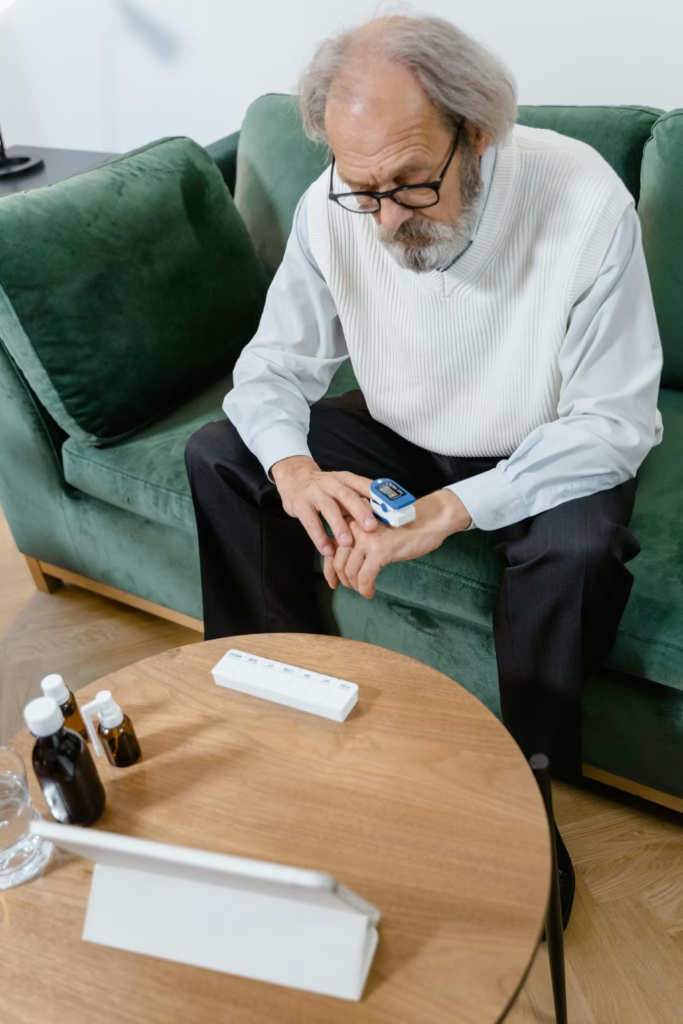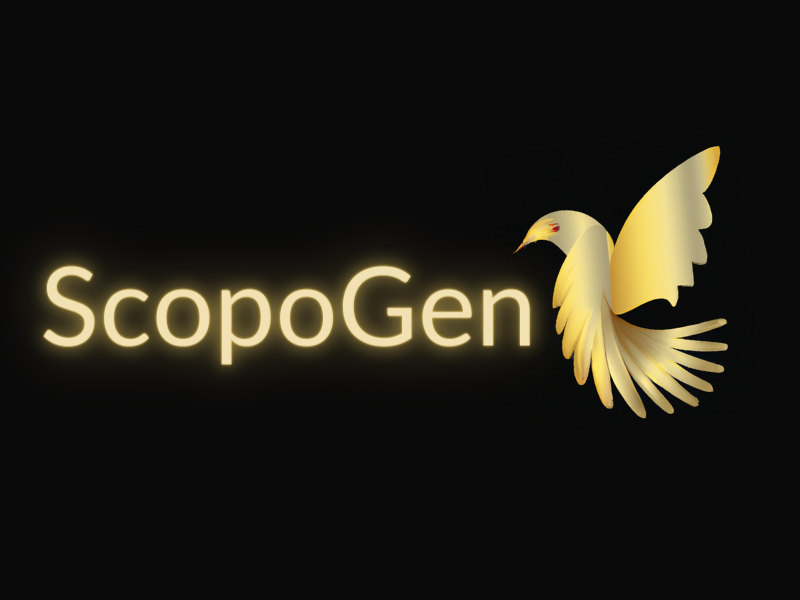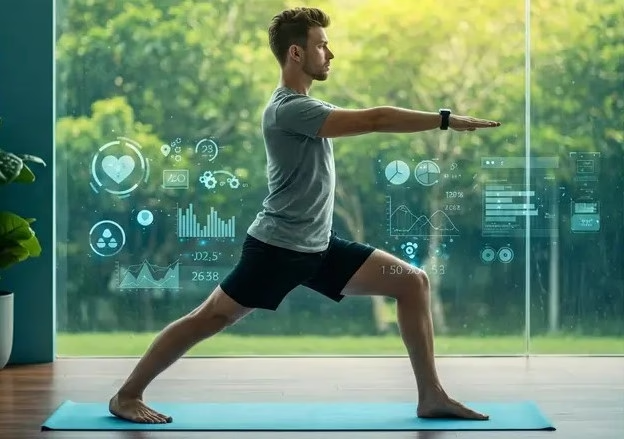Imagine waking up, glancing at your smartwatch to check how deeply you slept, asking your smart speaker for today’s workout, then scanning a meal with your phone to instantly know its nutritional content. Science fiction? Hardly. It’s just Tuesday morning for millions of people worldwide. Remember when counting steps meant mentally tracking your walks? Or when “telehealth” wasn’t even in our vocabulary? I sure do! The technology in health & wellness landscape has transformed dramatically, with technology now deeply woven into our health journeys. But is this digital revolution all positive, or should we approach with caution?
I’ve spent years watching technology reshape our relationship with wellness – sometimes for better, sometimes creating new challenges. In this guide, we’ll explore this fascinating intersection and how you can make tech work for you, not against you.
The Evolution of Health Technology
From Pedometers to AI Health Assistants
My first fitness tracker was a basic pedometer that clipped to my belt. Boy, have things changed! Health technology has evolved from simple step counters to sophisticated AI systems that predict health issues before symptoms appear.
The journey from basic fitness tools to today’s comprehensive health ecosystems wasn’t overnight. Early digital health tools primarily focused on single metrics – counting steps or tracking calories. Today’s technology offers comprehensive insights into everything from sleep quality to stress levels, heart health to hydration.
“The most significant shift has been from reactive to proactive health management,” says Dr. Amina Chen, digital health researcher. “Technology now helps us prevent problems, not just respond to them.”
The Democratization of Health Monitoring
Remember when health metrics were mysterious numbers only doctors could interpret? Those days are gone!
One of technology’s greatest contributions has been making health monitoring accessible to everyone. Blood pressure, heart rate, sleep patterns – metrics once measured only during occasional doctor visits are now available 24/7 from our wrists or phones.
This shift has empowered millions to take control of their health journeys. People with chronic conditions can track important metrics daily, while those focused on fitness can optimize their routines based on real data.
Real-life impact: Studies show people using fitness trackers walk approximately 2,000 more steps daily than non-users – that’s an extra mile without consciously trying!
How the Pandemic Accelerated Health Tech Adoption
Nothing supercharged health technology adoption like COVID-19. When in-person healthcare became limited, digital solutions stepped in – often permanently.
Telehealth visits jumped 63% during 2020, and many providers and patients discovered they preferred certain aspects of virtual care. Meanwhile, home fitness technology boomed as gym-goers brought their workouts into living rooms.
“The pandemic compressed about a decade of digital health adoption into a single year,” notes health tech analyst Jerome Wilson. “Changes we expected to take years happened in months.”
Categories of Health and Wellness Tech
Wearable Health Monitors
Wearables have grown up! No longer just step counters, today’s devices track:
- Heart rhythm irregularities
- Blood oxygen levels
- Skin temperature
- Stress levels via heart rate variability
- Sleep stages and quality

I still remember my skepticism when my doctor asked about my Apple Watch data during an appointment. Now that integration seems completely normal.
Virtual and Augmented Reality Fitness
The most exciting development in fitness tech? Making exercise feel like play!
VR fitness apps transform monotonous workouts into immersive adventures where you’re too busy having fun to notice you’re exercising. Imagine boxing against virtual opponents, dancing through cosmic landscapes, or running through ancient ruins – all while burning serious calories.
I tried Supernatural on my friend’s VR headset last month and was shocked to discover I’d been exercising intensely for 45 minutes without once checking the clock – something unimaginable during my regular treadmill sessions.
Mobile Health Apps
The app revolution has transformed wellness, with solutions for virtually every health need:
Mental wellness apps offer guided meditation, mood tracking, and even therapy sessions. My personal favorite helped me establish a 230-day meditation streak that genuinely reduced my anxiety levels.
Nutrition tracking has evolved beyond simple calorie counting to include detailed nutrient analysis and personalized recommendations.
Fitness apps have replaced expensive trainers for many, offering customized workouts that adapt to your progress.
Pro tip: Apps like MyFitnessPal now use AI to analyze your eating patterns and make personalized recommendations rather than just counting calories.
Smart Home Health Devices
Health wellness and technology now extends throughout our homes:
- Smart scales measure body composition, not just weight
- Sleep systems adjust room temperature and lighting for optimal rest
- Air quality monitors protect respiratory health
- Smart water bottles track hydration
These devices often work together, creating ecosystems of health information.
Telehealth and Virtual Care Platforms
Virtual healthcare has matured beyond simple video calls. Today’s telehealth platforms offer:
- AI-powered symptom assessment
- Integration with wearable data
- Prescription delivery services
- Specialist consultations without geographic limitations

My mom in rural area now accesses specialists she could never see before – a healthcare game-changer for millions.
Personalized Medicine & Genetic Testing
Perhaps the most revolutionary aspect of health technology is its ability to customize wellness approaches based on your unique genetic makeup.
Direct-to-consumer genetic testing services have democratized access to DNA insights, revealing everything from ancestry to potential health risks. More importantly, they provide actionable recommendations tailored to your genetic profile.
Last year, I discovered through genetic testing that I’m particularly sensitive to caffeine – explaining why even afternoon coffee disrupted my sleep when friends could drink it at dinner with no issues.
These platforms can guide nutrition choices, exercise approaches, and even medication responses based on your unique genetic code. It’s truly health advice written specifically for you at the molecular level.
Benefits of Technology in Health Management
Data-Driven Health Insights
The biggest advantage? Decisions based on actual data, not guesswork.
When I tracked my sleep consistently, I discovered that even small amounts of afternoon caffeine disrupted my sleep quality – something I never connected before seeing the patterns.
Technology transforms vague health goals like “get healthier” into specific, measurable targets. This clarity helps maintain motivation and measure real progress.
Personalized Wellness Plans
Cookie-cutter health advice is becoming obsolete as technology enables truly personalized approaches.
Modern wellness platforms analyze your unique data to create recommendations specifically for your body and goals. These systems consider factors like:
- Genetic predispositions
- Current fitness levels
- Personal preferences
- Daily habits and routines
My fitness app adjusts workout intensity based on my sleep quality the night before – something no generic plan could offer.
Convenience and Accessibility
Health management once required appointments, travel, and waiting rooms. Now, much of it happens seamlessly throughout our day.
For people with mobility issues, rural locations, or busy schedules, this accessibility represents a revolutionary improvement in healthcare access.
Motivation and Accountability
Let’s be honest – maintaining health habits is hard! Technology provides the nudges many of us need.
Social features create accountability through community challenges, while gamification elements make healthy behaviors more rewarding. Those little celebration animations when I close my activity rings genuinely motivate me!
AI in Medical Diagnostics
The most promising frontier might be AI’s growing ability to detect health issues earlier and more accurately than traditional methods.
Fascinating fact: Some AI diagnostic systems now outperform human doctors in detecting certain cancers and heart conditions from imaging tests.
From smartwatches that detect irregular heartbeats to smartphone apps that analyze skin lesions for potential melanoma, these tools are bringing medical-grade diagnostics into everyday life. While they don’t replace physicians, they can alert us to seek care earlier when treatments are most effective.
The real power comes when AI combines multiple data sources – genetic information, wearable data, and medical history – to predict potential health issues before symptoms appear.
Potential Drawbacks and Limitations
Digital Burnout and Tech Stress
The constant pings, notifications, and metrics can create a new form of stress.
“Some patients become obsessed with their health data,” warns psychologist Dr. Malik Johnson. “This hyper-vigilance can actually increase anxiety and harm wellbeing.”
I’ve experienced this myself – deleting my sleep tracking app for a month after realizing how stressed I felt when my sleep score was low.
Privacy and Data Security Concerns
Health data is deeply personal, and its collection raises important privacy questions.
Most users don’t realize how widely their wellness information may be shared. Many free health apps have business models built around selling aggregated user data to third parties.
Before using any health technology, it’s worth asking: Who can access this information? How might it be used?
Tip: Always read privacy policies before using health apps. Look for services that explicitly state they don’t sell your data to third parties.
Accuracy and Reliability Issues
Consumer health devices aren’t medical-grade equipment. Accuracy varies widely between products and metrics.
Studies show wrist-based heart monitors can be off by 5-10% during intense exercise, while sleep trackers sometimes misinterpret lying still as sleeping.
“Consider consumer health tech as providing trends, not precise measurements,” suggests medical device engineer Sophia Zhang.
Overreliance on Technology
Perhaps the most significant risk is outsourcing our body awareness to devices.
Before health trackers, people developed intuitive connections with their bodies – recognizing fatigue, hunger, and stress through internal cues. Relying completely on external metrics can weaken this natural awareness.
Finding the Right Tech-Life Balance
Mindful Technology Usage
The key is using technology intentionally, not compulsively.
Try these approaches:
- Designate tech-free wellness times (like meditation without apps)
- Review health data weekly, not constantly throughout the day
- Use technology to supplement body awareness, not replace it
“The goal should be technology serving you, not you serving technology,” says digital wellness coach Taylor Reed.
Selecting the Right Tools for Your Needs
More isn’t always better with health technology. The best approach is choosing specific tools that address your particular needs. Consider:

- What specific health goals are you working toward?
- Which metrics actually matter for those goals?
- What kind of feedback motivates rather than stresses you?
- I found success by focusing on just two metrics that genuinely impacted my wellbeing, rather than tracking everything possible.
When to Unplug: The Importance of Tech Breaks
Regular digital detoxes can refresh your relationship with both technology and your body.
During a recent weekend camping trip with no devices, I noticed how much more aware I became of subtle body signals and natural energy patterns.
Solution: Schedule regular tech-free wellness activities – a hike without tracking, meditation without an app, or exercise without performance metrics.
Future Trends in Health Technology
The future promises even deeper integration of technology into wellness, with AI playing a central role in predicting health issues before they become problems.
We’re moving toward comprehensive health ecosystems where your devices don’t just track health but actively help maintain it – adjusting your home environment, suggesting interventions, and even alerting healthcare providers when patterns indicate potential issues.
The most exciting developments combine technological innovation with human connection, using digital tools to enhance rather than replace the human elements of healthcare.
Finding Your Personal Tech-Wellness Balance
The relationship between technology and wellness isn’t one-size-fits-all. The perfect balance varies based on your health needs, personality, and goals.
Some thrive with comprehensive tracking and frequent feedback, while others benefit from a more minimalist approach with occasional check-ins.
What matters most is thoughtfulness – regularly reflecting on whether your health technology truly enhances your wellbeing or adds unnecessary complexity.
As we navigate this new landscape together, the goal remains timeless: using the tools available to create healthier, more vibrant lives, both digitally and physically.
What health technology has made the biggest difference in your wellness journey? Share your experience in the comments below!



